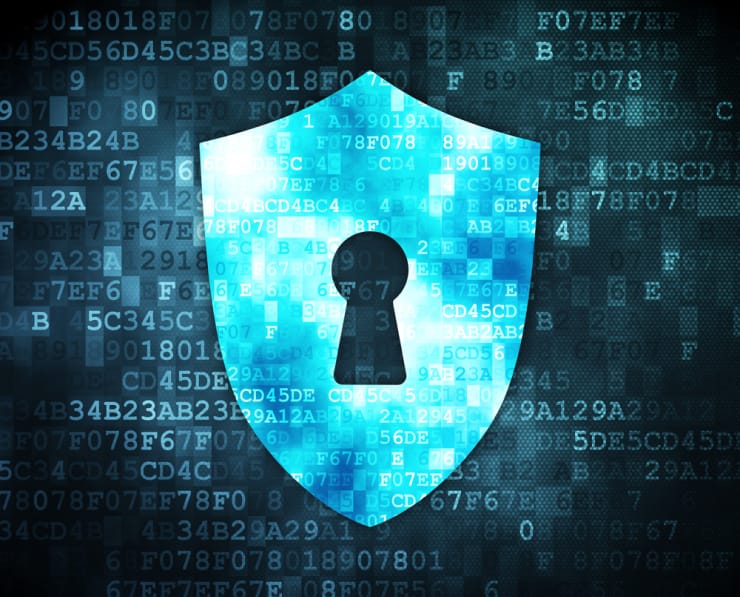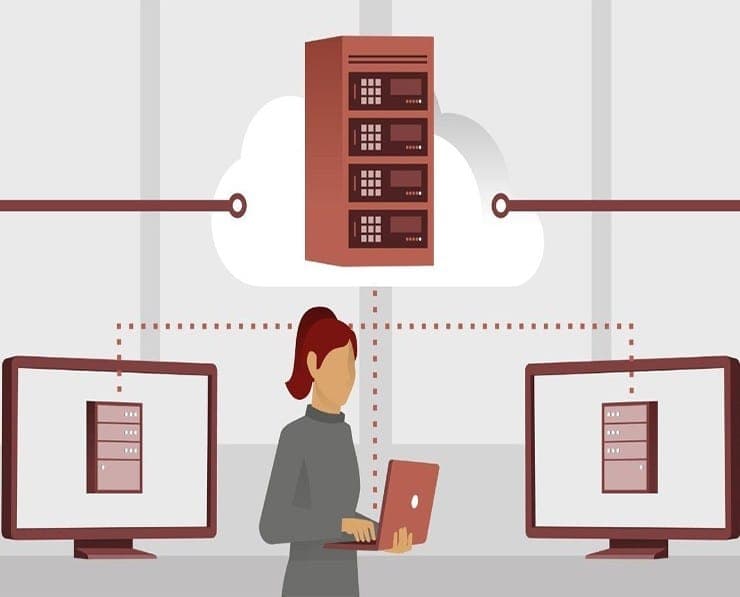Student Feedback
SY0-601: CompTIA Security+ Certification Video Training Course Outline
Exam Info
Security Basics
1.1 Social engineering techniques
1.2 Potential indicators of attacks
1.3 Analyze potential indicators...
1.4 Analyze potential indicators...
1.5 Different threat actors, vec...
1.6 Security concerns associated...
1.7 Techniques used in security ...
1.8 Techniques used in penetrati...
2.1 Security concepts in an ente...
2.2 Virtualization and cloud com...
2.3 Secure application developme...
2.4 Authentication and authoriza...
2.5 Implement cybersecurity resi...
2.6 Security implications of emb...
2.7 Physical security controls
2.9 Basics of cryptographic conc...
3.1 Implement secure protocols.
3.2 Implement host or applicatio...
3.3 Implement secure network des...
3.4 Install and configure wirele...
3.5 Implement secure mobile solu...
3.6 Apply cybersecurity solution...
3.7 Implement identity and accou...
3.8 Implement authentication and...
3.9 Implement public key infrast...
4.1 Tool to assess organizationa...
4.2 Policies, processes, and pro...
4.3 support an investigation
4.4 Apply mitigation techniques ...
4.5 Key aspects of digital foren...
5.1 Various types of controls.
5.2 Regulations, standards, or f...
5.3 Policies to organizational s...
5.4 Risk management processes an...
5.5 Privacy and sensitive data c...
Performance Based Questions
Exam Info
SY0-601: CompTIA Security+ Certification Video Training Course Info
CompTIA Security+ (SY0-601) Course for Beginners – Learn Security Essentials Fast
Ultimate Exam Prep for Certification Success
What You Will Learn From This Course
• Understand key cybersecurity concepts, including threats, attacks, and vulnerabilities, and how to mitigate them effectively
• Gain practical knowledge of security technologies and tools used to protect networks, data, and communication systems
• Learn to design and implement secure network architectures and apply industry-standard security models
• Develop skills in identity and access management, authentication, and authorization for users and devices
• Master risk management frameworks to identify, evaluate, and respond to potential security risks
• Explore cryptographic methods and public key infrastructure (PKI) to secure data and communication channels
• Acquire techniques to secure cloud services and virtualized environments across different cloud models
• Learn incident response procedures, recovery strategies, and business continuity planning
• Understand governance, risk, and compliance requirements such as GDPR, HIPAA, and PCI-DSS to meet regulatory standards
Learning Objectives
The primary objective of this CompTIA Security+ course is to provide a complete understanding of foundational cybersecurity principles and practices. Students will develop the ability to identify common security threats and implement effective countermeasures to protect networks, systems, and data. This course aims to prepare learners for real-world IT security tasks, including configuring security controls, detecting intrusions, and managing risks. Another objective is to equip candidates with the knowledge and confidence needed to successfully pass the CompTIA Security+ (SY0-601) certification exam. Through detailed explanations and hands-on concepts, learners will gain critical thinking and problem-solving skills required for cybersecurity roles. By the end of this training, students will be able to evaluate vulnerabilities, implement security protocols, and maintain compliance with regulatory standards. The course also focuses on helping participants build practical skills that can be directly applied to professional environments, ensuring they are ready to handle modern security challenges in any organization.
Target Audience
This course is designed for individuals who are seeking to advance their careers in cybersecurity and IT security operations. It is ideal for security professionals who need to validate their skills through a globally recognized certification. Network administrators who want to enhance their ability to secure network infrastructures will benefit from the in-depth content covered in this training. Systems administrators looking to strengthen their security management skills will find the course particularly valuable. IT managers and team leaders responsible for implementing and monitoring security policies can use this course to upgrade their technical knowledge and leadership capabilities. Security analysts, compliance officers, and professionals working in risk management will also gain significant insights to support their daily responsibilities. Entry-level IT professionals who have a foundational understanding of networking and are eager to enter the cybersecurity field will find this course an excellent starting point. The vendor-neutral nature of the certification makes it suitable for learners from various industries, regardless of the specific technologies or platforms they currently work with.
Requirements
To enroll in this CompTIA Security+ training, there are no mandatory prerequisites. The course is open to anyone with an interest in cybersecurity and IT security. However, having basic knowledge of computer networks, operating systems, and general IT concepts will be beneficial. A willingness to learn and engage with technical material is essential, as the course covers a wide range of security principles and practices. Learners are encouraged to dedicate time to study and practice to fully absorb the material and prepare for the certification exam. Access to a computer and a stable internet connection is required to follow the course content, complete exercises, and participate in any online resources provided.
Prerequisites
While there are no formal requirements, CompTIA recommends that candidates have at least two years of practical experience in IT administration with a focus on security. This may include tasks such as installing, configuring, and troubleshooting network devices like firewalls, routers, and switches. Familiarity with network protocols, hardware, and operating systems will help learners grasp key concepts more efficiently. A basic understanding of authentication methods, encryption techniques, and common cyber threats is also advantageous. Although these skills are not mandatory, they provide a strong foundation that can make the learning process smoother and more effective. Having prior exposure to risk management concepts and security best practices will further enhance a candidate’s ability to succeed in both the course and the certification exam.
Course Overview
This CompTIA Security+ course is a comprehensive training program designed to build a strong foundation in cybersecurity. It covers all major domains required to protect modern IT environments from evolving security threats. Students will explore topics such as threat detection, vulnerability analysis, cryptography, secure network design, and compliance management. The course blends theoretical concepts with practical approaches, helping learners develop skills that are directly applicable to real-world situations. Through detailed explanations and structured lessons, participants will learn how to secure networks, protect sensitive data, and ensure operational continuity. Emphasis is placed on understanding security technologies and tools, including firewalls, intrusion detection systems, and encryption methods, to provide a well-rounded understanding of cybersecurity measures. Learners will also gain insight into cloud security practices, incident response planning, and disaster recovery strategies to maintain resilience in today’s complex IT landscape. By completing this training, students will be fully prepared to take the CompTIA Security+ exam and pursue rewarding careers as security specialists, analysts, or administrators. This course serves as a gateway to professional growth in the cybersecurity industry, opening doors to advanced certifications and high-demand job roles.
Course Modules / Sections
This CompTIA Security+ course is structured into carefully organized modules to ensure a logical flow of concepts and a gradual build-up of cybersecurity knowledge. Each module focuses on a specific domain required to master the Security+ certification exam while also providing practical skills applicable to real-world IT environments. The first module introduces the fundamentals of cybersecurity, including the principles of confidentiality, integrity, and availability, and provides a comprehensive overview of the evolving threat landscape. Students gain an understanding of the importance of security in modern organizations and the role of a security professional. The second module focuses on threats, attacks, and vulnerabilities, exploring the different types of cyber threats such as malware, phishing, denial-of-service attacks, and insider threats. Learners examine case studies and real-world examples to better recognize vulnerabilities and develop strategies for mitigating risks. The third module covers technologies and tools, providing hands-on knowledge of security devices and applications such as firewalls, intrusion detection systems, encryption software, and endpoint protection solutions. This section emphasizes configuring and monitoring security tools to protect networks and systems from potential breaches.
The fourth module delves into architecture and design, guiding students through secure network topologies, system hardening techniques, and the implementation of layered defense strategies. This module also introduces secure application development concepts and the importance of integrating security into every phase of the system lifecycle. The fifth module addresses identity and access management, covering authentication methods, authorization processes, and account security. Learners explore multi-factor authentication, single sign-on, and privilege management to control and monitor user access effectively. The sixth module focuses on risk management, teaching students to identify, assess, and mitigate security risks using industry-standard frameworks and methodologies. Learners gain practical skills in developing security policies, incident response plans, and risk assessment reports.
The seventh module explains cryptography and public key infrastructure, providing a detailed understanding of encryption techniques, key management, and certificate-based security. This section highlights symmetric and asymmetric encryption, hashing, and secure key exchange processes to ensure the confidentiality and integrity of sensitive information. The eighth module covers cloud and virtualization security, focusing on securing cloud environments, understanding different cloud service models, and applying appropriate security measures to virtualized systems. Students learn how to protect data in multi-tenant cloud infrastructures and implement controls to prevent unauthorized access. The ninth module addresses resilience and incident response, equipping students with strategies for disaster recovery, business continuity planning, and effective incident handling. This module emphasizes maintaining operational stability and quickly restoring services after a security event. The final module covers governance, risk, and compliance, where learners study legal requirements, regulatory standards, and best practices to ensure organizational security policies meet global compliance frameworks such as GDPR, HIPAA, and PCI-DSS. Each module combines theoretical explanations with practical examples to provide a complete understanding of the subject matter.
Key Topics Covered
The course covers a wide range of essential cybersecurity topics designed to prepare learners for both the CompTIA Security+ exam and real-world job roles. Core topics include threat identification, attack vectors, and vulnerability analysis, enabling students to recognize and defend against common cyberattacks. Network security concepts such as secure protocols, segmentation, and perimeter defense are thoroughly examined to help students understand how to protect communication channels and network infrastructure. Risk management is another critical area, focusing on the identification and mitigation of security risks through policies, frameworks, and best practices. Cryptography is covered in detail, providing knowledge of encryption algorithms, key management techniques, and certificate authority functions that support secure communications. Identity and access management concepts are explored to ensure students can implement authentication and authorization processes that protect sensitive systems and data.
The course also addresses cloud and virtualization security, offering insights into protecting data stored in cloud environments, securing virtual machines, and understanding shared responsibility models between cloud providers and clients. Incident response planning is emphasized, teaching students to detect, respond to, and recover from security incidents effectively. Compliance and governance topics include understanding and implementing security policies that meet legal and regulatory standards, such as GDPR and HIPAA. Secure architecture and design principles are also key areas, ensuring learners can create robust and resilient IT systems. Additional topics include endpoint security, intrusion detection and prevention, secure application development, and emerging security trends such as zero trust architecture and advanced persistent threats. By covering these topics comprehensively, the course ensures that learners are not only exam-ready but also equipped with practical skills to handle cybersecurity challenges in diverse organizational settings.
Teaching Methodology
The teaching methodology for this course combines a blend of theoretical instruction, practical demonstrations, and applied learning to provide an engaging and effective training experience. The course begins with clear explanations of fundamental concepts, ensuring that learners build a solid foundation before progressing to advanced topics. Each module is delivered through detailed lectures that explain key principles, industry terminology, and security best practices in a straightforward and accessible manner. To reinforce understanding, real-world examples and case studies are integrated throughout the lessons, allowing students to see how cybersecurity concepts are applied in professional environments.
Hands-on learning is a core component of the methodology, with practical demonstrations of security tools and technologies. Learners gain exposure to configuring firewalls, managing encryption, and monitoring network traffic, which strengthens their ability to apply theoretical knowledge in real scenarios. Interactive exercises and guided practice sessions encourage active participation and help students develop problem-solving skills. The course is structured to promote incremental learning, where each concept builds on previous lessons, ensuring a seamless transition from basic to advanced topics. Clear explanations, visual aids, and structured content delivery help accommodate different learning styles and make complex cybersecurity concepts easier to grasp. The instructor-led format provides opportunities for learners to follow along step by step, enabling them to replicate processes and develop confidence in using security technologies.
In addition to lectures and demonstrations, the course incorporates knowledge checks and self-assessment activities to help learners evaluate their progress. These assessments are designed to reinforce key points, highlight areas that need further study, and ensure that students are well-prepared for the Security+ exam. Supplementary learning materials, such as downloadable resources and reference guides, provide additional support and enable learners to review content at their own pace. The combination of theoretical instruction, practical application, and continuous assessment creates an immersive learning environment that prepares students to succeed in both the certification exam and professional cybersecurity roles.
Assessment & Evaluation
Assessment and evaluation are integral components of this course, ensuring that learners can measure their understanding of key concepts and identify areas for improvement. Throughout the training, learners encounter a variety of assessment formats designed to test their knowledge of cybersecurity principles and their ability to apply them in practical scenarios. Quizzes are included at the end of each module to review key topics and reinforce learning. These quizzes consist of scenario-based questions, multiple-choice items, and problem-solving tasks that mimic the style of questions found in the CompTIA Security+ certification exam.
Practice exams are a major part of the evaluation process, offering a comprehensive review of the material and providing an accurate simulation of the actual certification test. These practice exams are designed to assess not only factual knowledge but also the ability to analyze security situations and choose the most appropriate solutions. Performance-based questions challenge learners to perform specific tasks such as configuring security settings or analyzing network traffic, allowing them to demonstrate practical skills. These assessments help students build confidence and improve their test-taking strategies by identifying knowledge gaps and highlighting areas that require additional study.
In addition to formal quizzes and practice exams, learners are encouraged to participate in self-assessment exercises and lab-based evaluations. Practical labs allow students to apply theoretical concepts in a simulated environment, where they can practice configuring security tools, responding to incidents, and implementing security controls. Evaluation of lab performance provides immediate feedback on technical skills and reinforces hands-on learning objectives. The course also includes periodic review sessions and knowledge checks to ensure continuous progress and comprehension of complex topics.
By combining multiple forms of assessment, the course ensures that learners are well-prepared for the Security+ certification exam and capable of applying their knowledge in real-world cybersecurity roles. The evaluation process not only measures academic achievement but also builds the practical competencies required to secure networks, manage risks, and respond to security incidents effectively. Through this structured assessment strategy, students develop the confidence and skills necessary to achieve certification and excel in the cybersecurity field.
Benefits of the Course
Enrolling in this CompTIA Security+ course provides numerous benefits for both aspiring and experienced IT professionals. One of the primary advantages is the acquisition of comprehensive cybersecurity knowledge that is aligned with industry standards and best practices. Learners gain the ability to identify, assess, and mitigate security risks, which enhances their effectiveness in securing networks, systems, and data. This course equips students with practical skills that can be immediately applied in professional environments, making them valuable assets to any organization. Another key benefit is the preparation for the globally recognized CompTIA Security+ (SY0-601) certification. This credential validates a candidate’s skills in cybersecurity and is widely respected across various industries, increasing job prospects and career advancement opportunities. The course also emphasizes hands-on learning, allowing participants to practice configuring firewalls, managing encryption, and implementing security policies, which builds confidence in handling real-world cybersecurity challenges.
The course supports career growth by preparing learners for a variety of roles, such as security analyst, network administrator, systems administrator, and IT security manager. It provides insights into emerging threats, cloud security practices, and compliance standards, which are critical in today’s rapidly evolving technology landscape. Students also gain an understanding of risk management frameworks, incident response procedures, and business continuity planning, ensuring they are well-prepared to protect organizational assets and respond effectively to security incidents. Completing the course enhances professional credibility, as employers recognize the Security+ certification as evidence of technical proficiency and a commitment to maintaining industry standards. Additionally, the course promotes lifelong learning and continuous professional development, as it qualifies for CompTIA continuing education units (CEUs), enabling participants to maintain and expand their cybersecurity expertise over time. By combining theoretical knowledge with practical application, the course prepares learners to confidently tackle security challenges, advance their careers, and make meaningful contributions to their organizations’ IT security posture.
Course Duration
The CompTIA Security+ course is designed to provide a thorough and structured learning experience that balances theoretical knowledge with practical skills. The course duration is typically structured to accommodate different learning paces, allowing learners to absorb complex cybersecurity concepts effectively. On average, the training program spans 40 to 60 hours, depending on the learning format and the depth of practical exercises included. This duration ensures that students have sufficient time to understand all key domains covered by the Security+ exam, including threats and vulnerabilities, cryptography, identity and access management, risk management, and compliance. The course is organized into modules that build upon one another, providing a progressive learning path that starts with fundamental concepts and advances to more complex security practices.
The duration also includes hands-on labs, practical demonstrations, and assessment exercises, which are essential for reinforcing learning and developing real-world skills. Learners are encouraged to dedicate time to reviewing course materials, participate in lab exercises, and complete practice assessments to ensure a comprehensive understanding of each topic. Flexibility in course duration allows participants to pace their learning according to their professional and personal commitments. For those seeking accelerated learning, intensive bootcamp-style formats can condense the training into a shorter period while maintaining content coverage. Longer-duration courses, on the other hand, offer the advantage of in-depth exploration of concepts, additional practice sessions, and detailed discussions of case studies. By providing a well-structured timeline, the course ensures that learners are fully prepared for the Security+ exam and can apply cybersecurity best practices effectively in their professional roles.
Tools & Resources Required
To maximize the learning experience and gain practical skills, this course requires access to several essential tools and resources. A reliable computer with internet connectivity is necessary to access course materials, participate in online demonstrations, and complete virtual lab exercises. Students will benefit from a modern operating system capable of supporting virtualization software and security applications. Virtual lab environments are a key component of the course, allowing learners to simulate real-world network configurations, security implementations, and threat scenarios in a controlled setting. These labs provide hands-on experience with firewalls, intrusion detection systems, endpoint protection tools, and other security technologies.
Additional resources include downloadable course materials such as lecture notes, study guides, and reference documents, which help reinforce learning and provide quick access to key concepts. Security simulation software and tools for network monitoring, vulnerability scanning, and cryptography are also recommended to allow learners to practice technical skills and gain confidence in applying theoretical knowledge. Access to online forums, discussion boards, and instructor support enhances the learning experience by providing opportunities for collaboration, problem-solving, and clarification of complex topics. Students are encouraged to use practice exams and assessment quizzes to test their knowledge and identify areas that need further review.
For learners pursuing the Security+ certification, familiarity with documentation on regulatory compliance standards, industry frameworks, and security policies is beneficial. This ensures that participants can understand not only technical security measures but also governance and risk management requirements. By combining these tools and resources, students gain a comprehensive understanding of cybersecurity principles, practical experience in implementing security controls, and the knowledge required to succeed in both professional environments and the CompTIA Security+ certification exam. Access to these resources ensures a complete and immersive learning experience, preparing learners to confidently secure networks, protect sensitive information, and respond effectively to cybersecurity threats.
Career Opportunities
Completing the CompTIA Security+ (SY0-601) certification course opens a wide array of career opportunities in the field of cybersecurity and information technology. The certification is globally recognized and demonstrates a candidate’s expertise in network security, risk management, and compliance, which makes them highly valuable to employers across multiple industries. Security analysts are one of the primary roles that benefit from this certification, as they are responsible for monitoring, detecting, and responding to security incidents within an organization. These professionals utilize the knowledge gained from the course to analyze threat patterns, configure security tools, and implement defensive measures to protect sensitive information. Network administrators also gain significant advantages from the course, as they acquire the skills to secure network infrastructure, manage access controls, and enforce security policies to prevent unauthorized intrusions.
Systems administrators benefit by enhancing their ability to maintain secure servers, configure operating systems securely, and ensure system integrity while minimizing vulnerabilities. IT managers and team leads can leverage the knowledge gained to develop and oversee security policies, coordinate risk management strategies, and ensure compliance with regulatory frameworks. Compliance officers and risk managers find the course valuable for understanding governance standards, legal requirements, and frameworks such as GDPR, HIPAA, and PCI-DSS, allowing them to guide organizations in maintaining secure and compliant environments. Entry-level IT professionals can establish a solid foundation in cybersecurity through this course, making them competitive candidates for positions such as junior security analysts, IT support specialists with security responsibilities, and network support technicians.
Additional career paths include penetration testers, incident responders, cloud security specialists, and cybersecurity consultants. These roles require the ability to evaluate system vulnerabilities, simulate attacks, and design mitigation strategies, all of which are covered extensively in the course. The Security+ certification also serves as a stepping stone for advanced certifications such as CompTIA Cybersecurity Analyst (CySA+), Certified Information Systems Security Professional (CISSP), and Certified Ethical Hacker (CEH), providing further opportunities for career progression. With the increasing demand for skilled cybersecurity professionals worldwide, individuals who complete this course are well-positioned to secure high-demand jobs, enhance their professional credibility, and contribute meaningfully to organizational security initiatives.
Conclusion
The CompTIA Security+ (SY0-601) certification course is a comprehensive and practical program designed to equip learners with the skills, knowledge, and confidence required to excel in the cybersecurity industry. It covers all essential domains, including threats and vulnerabilities, cryptography, identity and access management, risk assessment, cloud security, incident response, and compliance standards. Through a structured learning approach that combines theoretical instruction, hands-on practice, and assessments, participants gain a thorough understanding of how to secure networks, systems, and data in modern IT environments. The course prepares candidates to pass the CompTIA Security+ exam while also building practical skills that are immediately applicable in professional roles.
Beyond exam preparation, this course provides participants with the tools and expertise necessary to respond to real-world security challenges, implement effective risk management strategies, and maintain compliance with regulatory standards. It offers a vendor-neutral perspective, making the skills acquired relevant across a wide range of technologies, industries, and organizational settings. Learners also benefit from exposure to practical scenarios, lab exercises, and resources that reinforce knowledge and develop technical competencies critical for security professionals. By completing this program, individuals enhance their employability, increase career advancement potential, and gain the confidence to take on challenging cybersecurity responsibilities. The course not only prepares candidates for immediate roles in IT security but also establishes a strong foundation for further professional development and advanced certifications, ensuring long-term career growth in the dynamic and high-demand field of cybersecurity.
Enroll Today
Enrolling in the CompTIA Security+ (SY0-601) course provides an excellent opportunity to develop the skills, knowledge, and confidence necessary to thrive in the rapidly evolving cybersecurity industry. This program is carefully designed to cater to learners at all levels of experience, whether you are an entry-level IT professional looking to begin a career in security, a systems or network administrator seeking to strengthen your expertise, or a seasoned security professional aiming to validate and update your knowledge with a globally recognized certification. The course provides a comprehensive learning path that covers all critical domains of cybersecurity, including threat identification, vulnerability management, cryptography, identity and access management, risk assessment, cloud and virtualization security, incident response, and governance and compliance. By engaging in this structured curriculum, learners will gain a solid foundation in both theoretical principles and practical applications, ensuring they are well-prepared for real-world challenges and the certification exam.
With hands-on labs, practical exercises, and scenario-based simulations, students develop the ability to configure security tools, implement protection strategies, monitor network traffic, and respond effectively to security incidents. These practical components are essential for building competence and confidence in applying cybersecurity principles in professional environments. In addition to technical skills, the course emphasizes critical thinking, problem-solving, and decision-making, which are essential attributes for IT security professionals tasked with protecting organizational assets and maintaining business continuity. Participants will also benefit from exposure to emerging technologies, security trends, and best practices, which ensures that the knowledge gained remains relevant and actionable in today’s dynamic IT landscape.
By completing this course, you not only gain the preparation needed to pass the CompTIA Security+ (SY0-601) certification exam but also acquire highly sought-after skills that are valued by employers worldwide. The certification serves as a strong credential that demonstrates your proficiency in cybersecurity concepts, your ability to secure networks and systems, and your readiness to take on challenging IT security roles. The program is designed to accommodate diverse learning schedules, providing flexibility for professionals who need to balance work, study, and personal commitments. Learners have access to comprehensive course materials, interactive labs, practice exercises, and supplementary resources, which together ensure a rich and immersive educational experience.
Investing in this training lays the foundation for a successful and sustainable career in cybersecurity. Graduates of the course are well-positioned to pursue high-demand job roles such as security analyst, network security engineer, systems administrator, IT manager, compliance officer, and cybersecurity consultant. The skills and knowledge gained enable professionals to make meaningful contributions to organizational security strategies, protect critical data assets, and enhance overall resilience against cyber threats. The course also provides opportunities for continuous professional development through CompTIA continuing education units (CEUs), allowing learners to maintain and expand their certification credentials over time.
Beyond immediate career benefits, enrolling in this course opens doors to further advancement in the cybersecurity field. Learners can pursue specialized certifications, deepen expertise in areas such as penetration testing, cloud security, or advanced risk management, and position themselves for leadership roles within IT security departments. The combination of practical skills, industry-recognized certification, and a solid understanding of security principles ensures that participants are not only exam-ready but also fully prepared to address complex security challenges and contribute to the protection of organizational infrastructure.
Take the step today to enhance your knowledge, achieve certification, and advance your professional journey in the ever-evolving field of cybersecurity. By committing to this comprehensive training, you invest in your future, elevate your professional profile, and equip yourself with the skills necessary to succeed in a competitive and high-demand industry. The CompTIA Security+ course provides the guidance, tools, and practical experience required to thrive as a cybersecurity professional and to make a meaningful impact in any organization that relies on secure IT systems. Enroll today and begin the journey toward mastering cybersecurity, advancing your career, and securing a rewarding future in the technology-driven world.













